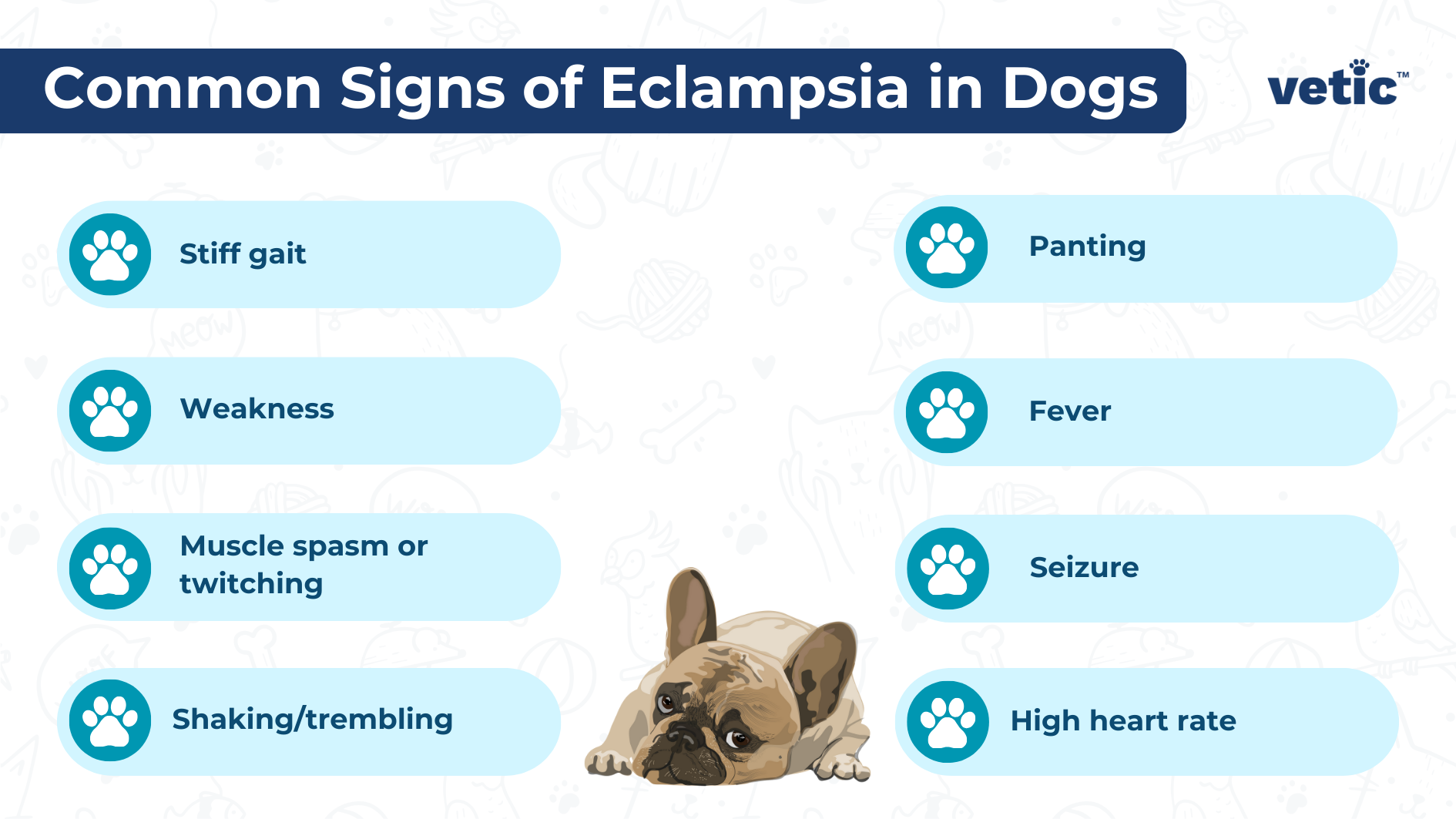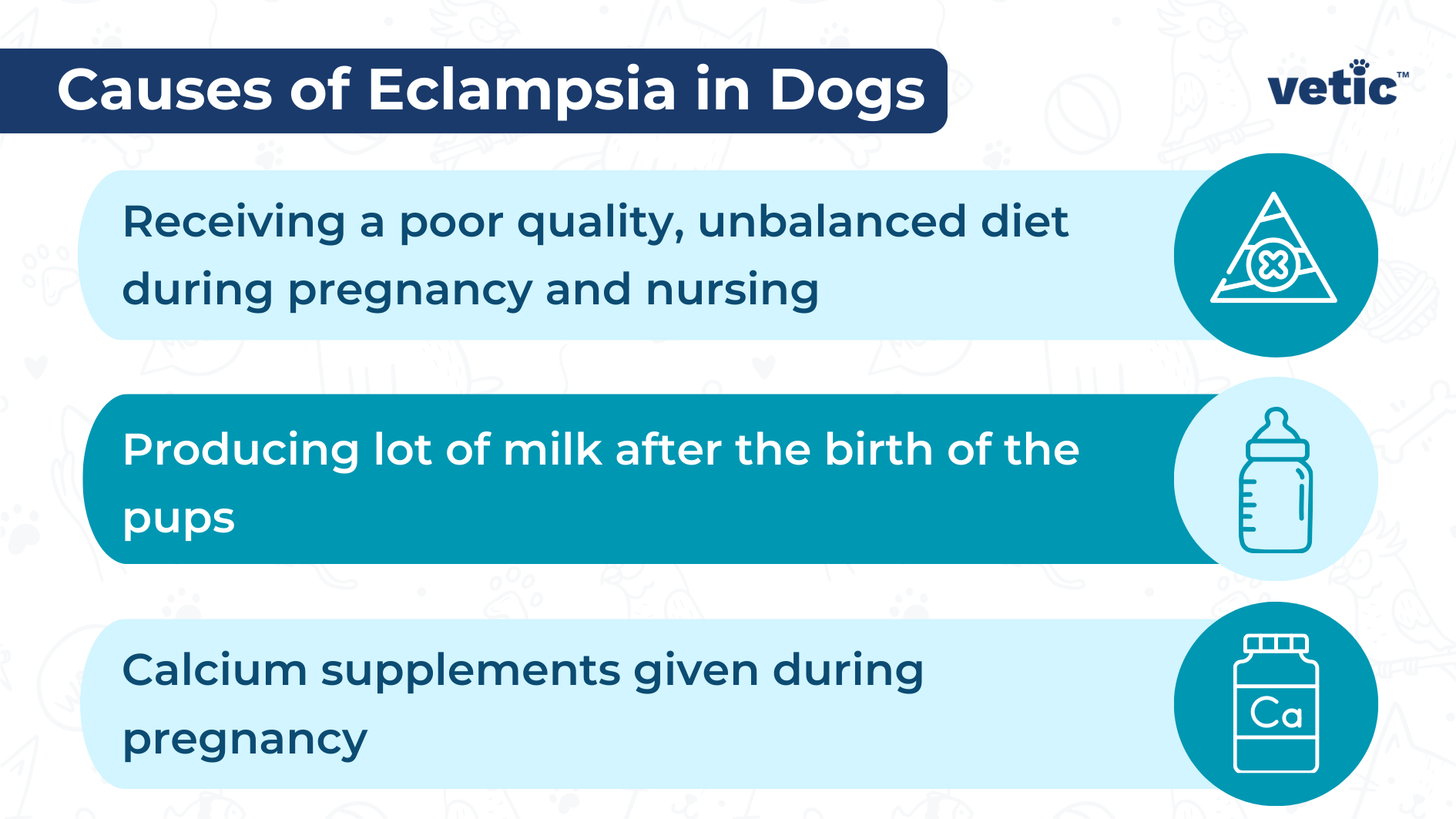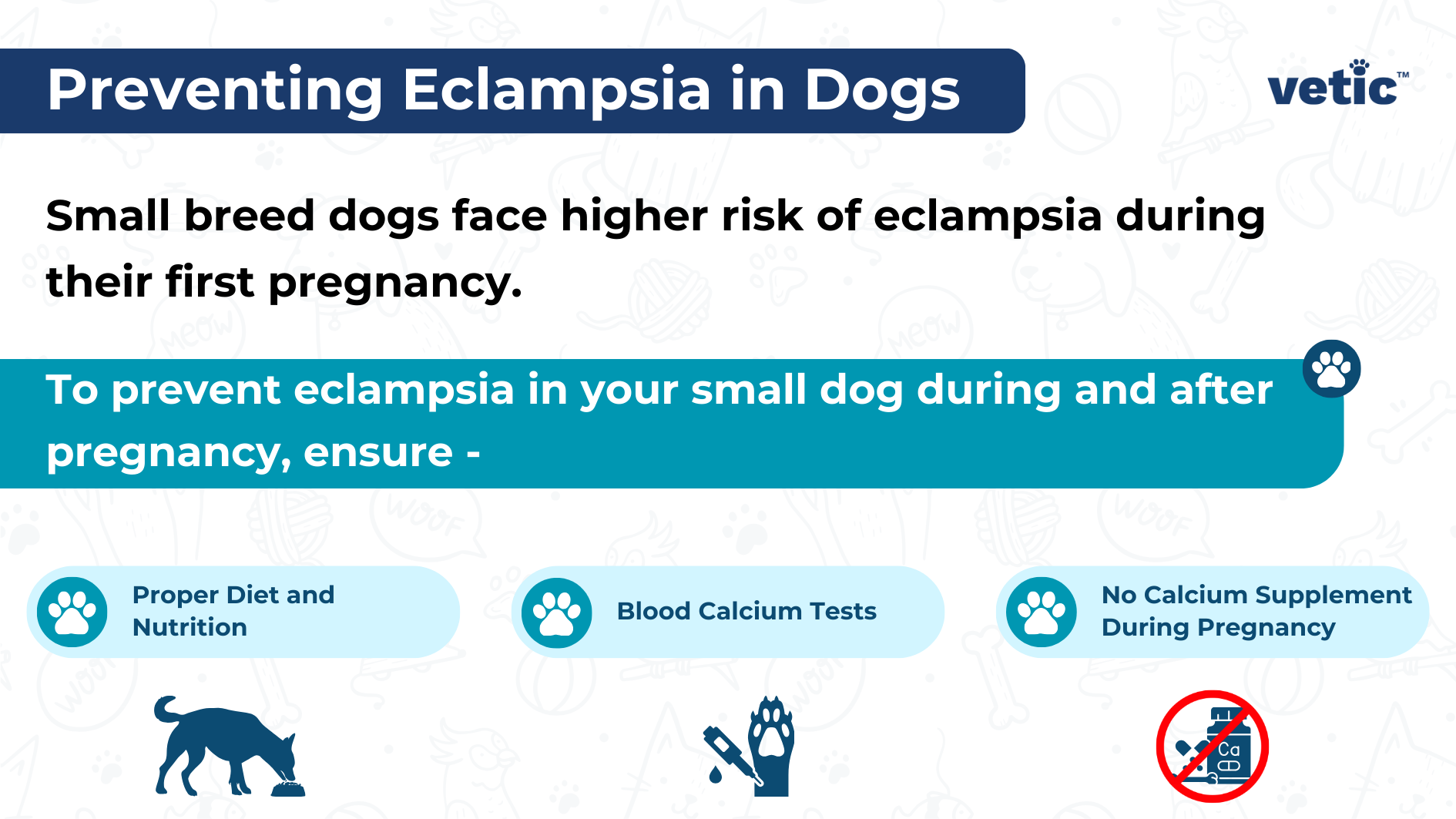What is eclampsia in dogs?
Eclampsia is a medical emergency caused by a sharp drop in the blood calcium levels in lactating or pregnant dogs. It commonly occurs in small breed female dogs when they are nursing puppies.
Eclampsia is also known as hypocalcemia. Veterinarians may also refer to it as puerperal tetany.
New mother dogs can develop eclampsia while giving birth, immediately afterwards, 1-4 weeks after lactating or even before giving birth.
A sudden drop in the blood calcium levels can be life threatening for the mother dog. While it is not very common among indoor dogs or pet dogs who have been receiving nutritious meals, eclampsia accounts for 25% of all emergency cases in breeding female dogs.
What are the signs of eclampsia in dogs?

Common signs of eclampsia in dogs include –
- Stiff gait
- Weakness
- Muscle spasm or twitching
- Shaking/trembling
- High heart rate
- Panting
- Fever
- Seizure
In most pregnant or nursing dogs, eclampsia begins with mild signs including changes in behaviour, restlessness, pacing and stiffness in gait.
What causes eclampsia in dogs?

- A large litter size increases the risk of eclampsia in first time mothers belonging to small breeds.
- Eclampsia is more common during the first to fourth week of lactation, since the mother’s body produces the most milk during this time.
- High milk production takes too much calcium from the mother’s body.
- It can happen during pregnancy during which the pups’ bones take up the calcium from the mother’s body.
- Eclampsia is also seen in dogs who have been given too much calcium in the form of supplements during their pregnancy. High calcium levels suppress the hormonal pathway necessary for the availability of enough calcium in the mother’s blood.
- Diseases of the parathyroid gland can also cause a drop in the blood calcium levels.
- Inadequate nutrition during pregnancy can also cause eclampsia in pregnant female dogs and lactating mothers.
Who is at risk of eclampsia?
Some small breeds are more predisposed to eclampsia during pregnancy and lactation. Breeds predisposed to eclampsia include Pomeranians, Shih Tzus, Chihuahua and Toy Poodles.
It is more common with first time mothers who have a larger than normal-sized litter.
How to prevent eclampsia in dogs?

If you are the parent of a small breed female dog who is pregnant for the first time, then you need to coordinate with your veterinarian regularly to prevent any health complications including eclampsia.
However, here are a few ways you can reduce your dog’s risk of developing eclampsia –
- Feed them commercial diets labelled for pregnant and lactating mothers.
- Do not give them vitamin and nutritional supplements without consulting your veterinarian.
- Do not arrange for a home birth without any emergency veterinary care centre on standby.
- Opt for blood tests right before whelping (birthing) and 1 week after the birth of the pups.
If your dog shows behavioural changes after giving birth, separate her from their pups and take her to the veterinarian immediately.
How is eclampsia diagnosed in dogs?
The presumptive diagnosis of eclampsia in dogs is based on the signs that include tremors, whining, fever, stiffness while walking and behavioural changes.
The diagnosis of eclampsia requires the determination of the serum calcium levels of the mother dog.
The veterinarian will also need to rule out other possible causes of seizures including epilepsy, toxicity, and hypoglycemia.
What is the treatment for eclampsia in dogs?

Eclampsia is an emergency for female dogs of any age.
If you suspect your pregnant or nursing dog is acting strangely, do not waste time. Behavioural changes can be a sign of eclampsia and it should be treated promptly by a veterinarian.
If your dog has eclampsia, you will not be able to do anything about it at home.
The veterinarian will need to administer fluids and an easily absorbable form of calcium to your dog intravenously.
Low calcium levels may also have adverse effects on the heart health of a dog. So, the veterinarian will monitor your dog’s heart rate during the intravenous fluid administration process.
Once the veterinarian declares the dog with eclampsia becomes stable, she can begin receiving oral medication. Oral medication may consist of calcium supplements along with Vitamin D3.
What should dog parents know about eclampsia?
If your dog has developed eclampsia during one pregnancy, they will likely show the same symptoms during future pregnancies and lactation.
Spaying your dog can help preserve their health and wellbeing in the long term.

